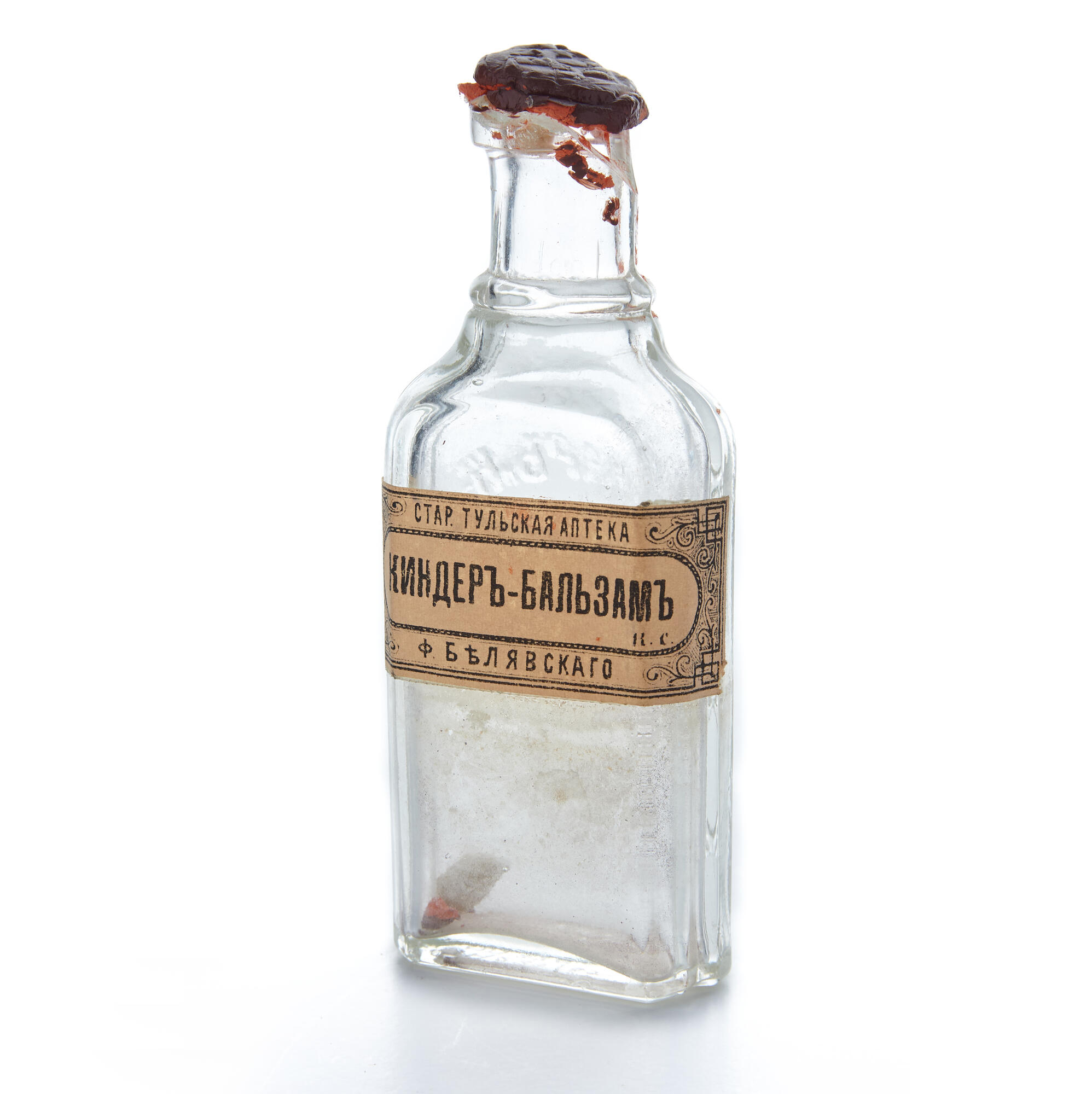Kinder balm is a fragrant alcoholate, a folk remedy that was often used in Russia, especially in the provinces. It was obtained from alcohol and essential oils dissolved in it: nutmeg, lemon, mint. In old collections of recipes and lists of permitted medicinal substances, there are different ways of making kinder balm. The composition of the drug according to the 6th Russian Pharmacopoeia of 1910 was as follows: essential oils — nutmeg 10.0, lavender — 10.0, lemon — 3.0, clove — 3.0, fennel — 3.0, spearmint — 3.0, cinnamony — 3.0, lemon balm — 1.0, 90% wine alcohol — 1.800 and 70% wine alcohol — 5.000, 0. The volume was probably indicated in fractions. In folk medicine, kinder balm was used 30–60 drops at a time, more often women during pregnancy used it, after childbirth, with abdominal pain after lifting weights, as a remedy for uterine prolapse. Hence another name for it — ‘uplifting drops’. They were used both externally — rubbed in the abdominal area or applied as a compress — and internally. From the point of view of modern pharmacology, kinder balm, even if it worked, then it did only as a light antiflatulent thanks to essential oils.
In the late 19th — early 20th century, kinder balm gained popularity as an alcoholic drink among the lower social groups. Its frequent use led to the loss of vision and even death. In addition to kinder balm, there were also so-called Hoffmann drops — ‘liquor’, which were a mixture of two parts of 90% alcohol and one part of sulphuric ether. The abuse of these liquids got so popular among the people that the medical council considered it necessary to prohibit their free sale in pharmacies.
It was then that the tsarist government began the centralized production of alcohol: the introduction of a monopoly was supposed to help reduce alcoholism. In 1894, after the research of Dmitry Mendeleev, the technology for the production of such vodka was patented, which, among other characteristics, was diluted with water by weight exactly to 40° potency. Ever since the cheap state vodka appeared on the market, alcohol solutions were practically abandoned.



